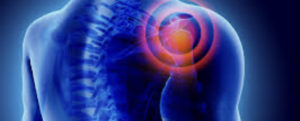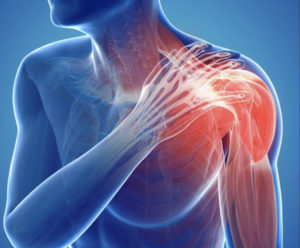CORE Physical Therapy In Omaha Explains…
By Dr. Mark Rathjen PT DPT CSCS
CORE Physical Therapy Co-owner
17660 Wright St. 9/10
Omaha NE
402-933-4027
“Manual physical therapy applied by experienced physical therapists combined with supervised exercise in a brief clinical trial is better than exercise alone for increasing strength, decreasing pain, and improving function in patients with shoulder impingement syndrome.”
33 men and 32 women tested with shoulder impingement syndrome with and without manual therapy. The sessions 2x week for 3 weeks, and the manual therapy group not only reported less pain before and after treatments sessions, they also tested higher in the strength testing.
Strength testing was using isometric strength testing, which can be limited, but in 3 weeks a significant difference in strength likely is from the proprioception properties that can be gained from manual therapy. Proprioception will increase strength and neuromuscular recruitment as well as positional joint awareness to a much higher degree to strength training alone. A significant amount of increased strength in 3 weeks with traditional lifting is uncommon, and would be even more uncommon with a seasoned athletes. As it does not all for enough loading and time to have the muscular system recover.
CORE Physical Therapy in Omaha specializes in manual therapy. joint glides, scapular motion training and postural training will allow for faster recovery and joint awareness as well as increases in strength gains. In a time when strength and recovery timelines matter to athletes to the highest level of importance, saving a few weeks or months on recovery can be vital for continued play during a competitive season.

. 2000 Mar;30(3):126-37.
doi: 10.2519/jospt.2000.30.3.126.
Comparison of supervised exercise with and without manual physical therapy for patients with shoulder impingement syndrome
- PMID: 10721508
- DOI: 10.2519/jospt.2000.30.3.126
Abstract
Study design: A prospective randomized clinical trial.
Objective: To compare the effectiveness of 2 physical therapy treatment approaches for impingement syndrome of the shoulder.
Background: Manual physical therapy combined with exercise is a commonly applied but currently unproven clinical treatment for impingement syndrome of the shoulder.
Methods and measures: Thirty men and 22 women (age 43 years +/- 9.1) diagnosed with shoulder impingement syndrome were randomly assigned to 1 of 2 treatment groups. The exercise group performed supervised flexibility and strengthening exercises. The manual therapy group performed the same program and received manual physical therapy treatment. Both groups received the selected intervention 6 times over a 3-week period. The testers, who were blinded to group assignment, measured strength, pain, and function before treatment and after 6 physical therapy visits. Strength was a composite score of isometric strength tests for internal rotation, external rotation, and abduction. Pain was a composite score of visual analog scale measures during resisted break tests, active abduction, and functional activities. Function was measured with a functional assessment questionnaire. The visual analog scale used to measure pain with functional activities and the functional assessment questionnaire were also measured 2 months after the initiation of treatment.
Results: Subjects in both groups experienced significant decreases in pain and increases in function, but there was significantly more improvement in the manual therapy group compared to the exercise group. For example, pain in the manual therapy group was reduced from a pretreatment mean (+/- SD) of 575.8 (+/- 220.0) to a posttreatment mean of 174.4 (+/- 183.1). In contrast, pain in the exercise group was reduced from a pretreatment mean of 557.1 (+/- 237.2) to a posttreatment mean of 360.6 (+/- 272.3). Strength in the manual therapy group improved significantly while strength in the exercise group did not.
Conclusion: Manual physical therapy applied by experienced physical therapists combined with supervised exercise in a brief clinical trial is better than exercise alone for increasing strength, decreasing pain, and improving function in patients with shoulder impingement syndrome.
Similar articles
-
Knee Surg Sports Traumatol Arthrosc. 2007 Jul;15(7):915-21. doi: 10.1007/s00167-007-0288-x. Epub 2007 Feb 28.PMID: 17333123 Clinical Trial.
-
Arch Phys Med Rehabil. 2014 Feb;95(2):345-52. doi: 10.1016/j.apmr.2013.09.022. Epub 2013 Oct 15.PMID: 24139986 Clinical Trial.
-
The effectiveness of manual therapy in supraspinatus tendinopathy.
Acta Orthop Traumatol Turc. 2011;45(3):162-7. doi: 10.3944/AOTT.2011.2385.PMID: 21765229 Clinical Trial. -
J Sport Rehabil. 2016 May;25(2):195-201. Epub 2014 Oct 30.PMID: 25364914 Review.
At CORE Physical Therapy in Omaha, We specialize in the treatment of athletes. We have worked with athletes for a combined 30 years. CORE was established in 2015 by Dr. Mark and Dr. Claire Rathjen is family owned and operated.
We are proud to serve the greater Omaha metro area.
For More information, Please feel free to contact us http://coreomaha.com/contact/
Please feel free to follow us at https://www.facebook.com/COREomaha/
To get started http://coreomaha.com/getting-started/
For more Blog information http://coreomaha.com/blog/
Youtube Account linked below.
https://www.youtube.com/channel/UCVg8OSN5h-i1n_ykw1Gvahg?view_as=subscriber

